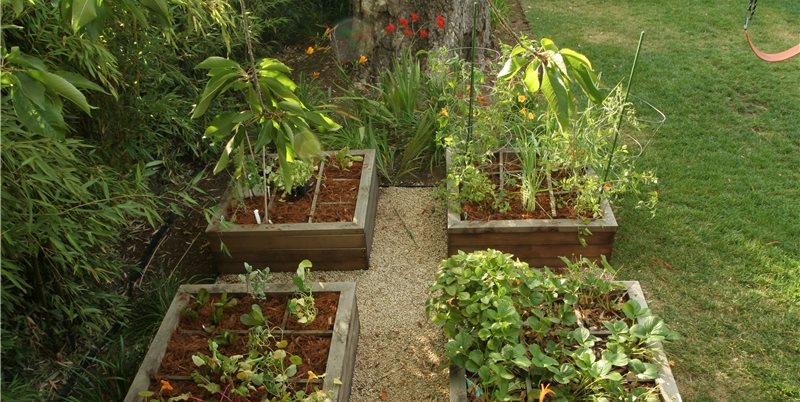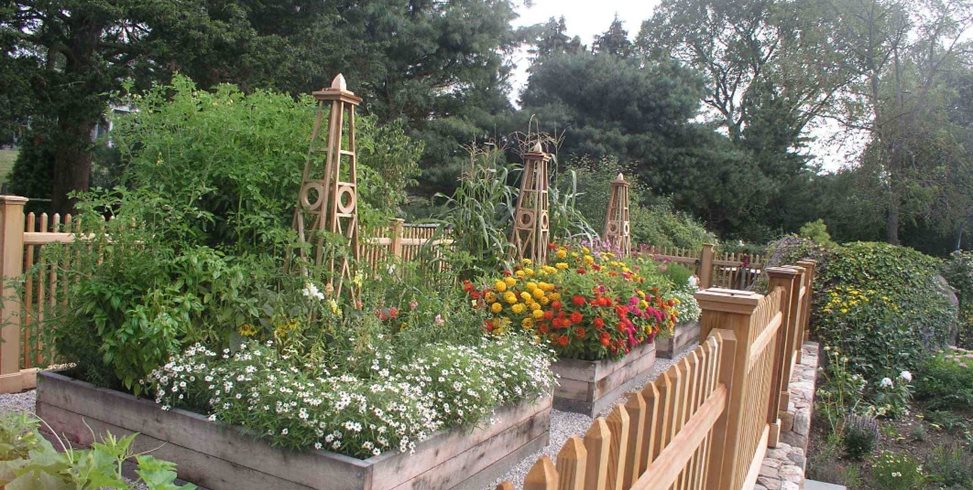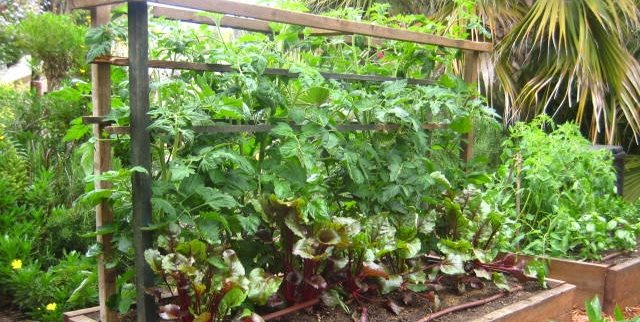Raised Garden Beds
Design ideas for raised vegetable gardensBenefits of raised garden beds:
- Excellent drainage
- Easy access
- Complete control over soil quality
- Low-maintenance
- High productivity
- Easier to defend crops against pests
What is a raised bed?
A raised bed is great for growing vegetables, herbs or even flowers for cutting. Raised garden beds are elevated above ground level which makes it easier to control growing conditions and access your plants.
What are the benefits of a raised bed?
Are you sore from constantly bending over to tend your garden? Do gophers eat your vegetable crop before you even get the chance to dream up a recipe? Do you struggle to grow thriving tomatoes because of nutrient lacking soil?
If you answered yes to any of these questions a raised bed garden may be the solution for you. Gardening in raised beds can significantly lessen, or remove altogether, the challenges of a traditional vegetable garden. Stephen Orr, author of Tomorrow's Garden, states that the work of building raised beds will be rewarded with a superior harvest and minimal weeding. The many benefits of raised beds make them an attractive option for experienced and inexperienced gardeners alike.
Where should a raised garden bed be built?
A raised bed can be placed in your front yard, backyard or side yard. If you plan to grow edibles the location of the bed should receive a generous amount of sunlight. Experts recommend a north-south orientation for the optimum light conditions. Many homeowners prefer to locate their raised beds near the kitchen so that they only have to walk a few steps out the door to gather fresh herbs and veggies.
Hear landscape architect, Ive Haugeland, explain the most important considerations for raised bed placement.
How big should a raised bed be?
When determining the size of a raised bed you should consider your available space, desired yield and accessibility. Generally, 4 feet is the maximum width for a raised bed that can be accessed from all sides. If you plan to place the bed against a wall or fence, limit the width to 3 feet or less. A good rule of thumb is to make sure one can comfortably reach everything growing in the bed.
- Pro Tip: "It takes an area of about 3 by 3 feet to raise enough carrots to feed a family of four year-round." Scott Cohen, The Green Scene
Raised bed dimensions:
- 3-4 feet wide
- 12-18 inches tall
- Popular dimensions: 3' x 3', 4' x 6', 4' x 8'
An 18 inch height works well if you plan to cap the edges of the bed to serve as seating. Otherwise, 12 inches is a sufficient height for the walls of the bed. Keep in mind that the deeper the bed is the more control you will have over soil quality and the easier it will be to tend your vegetables.
Most people opt for square or rectangular beds, but if you want a circular design the 3-4 foot width still applies. If you make the diameter more than 4 feet, you will not be able to reach the center of the bed.
What materials can be used to build a raised bed?
Raised bed material options:
- Wood - redwood or cedar
- Metal - steel or aluminum
- Stone
- Brick
- Masonry block
- Repurposed items - stock tank, broken concrete, tree boxes
When selecting a material to build your raised garden beds, the most important consideration is outdoor durability. Additionally, the materials used for a raised bed should not contain hazardous chemicals that could affect your plants. Otherwise it is up to your tastes and budget to determine what material is best.
Watch a video showing raised beds being built out of masonry block.
What is the best way to water a raised bed?The most popular way to water a raised bed is to install an automatic drip irrigation or bubbler system. Drip irrigation saves water, improves growth and discourages weeds by slowly delivering water directly where it is needed over a long period of time.
Watch a video highlighting a raised bed vegetable garden equipped with a bubbler irrigation system.
Another, less permanent option, is to use a soaker hose to water your raised beds. Simply attach the hose to a spigot and turn on the water, the hose will seep water along its entire length.

 Backyards
Backyards
 Front Yards
Front Yards







